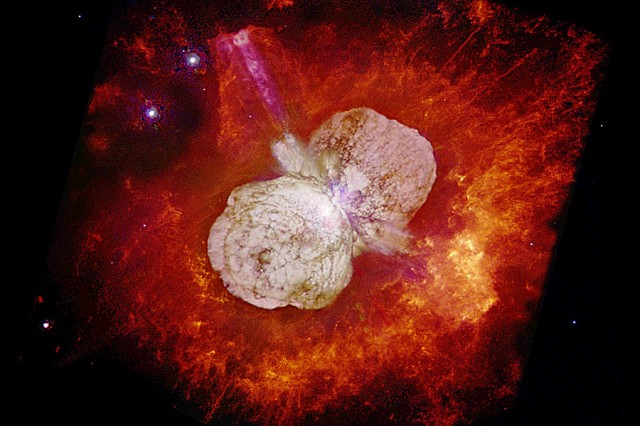Remains of the Universe’s first stars found plastered onto a present one
Ars Technica » Scientific Method 2014-09-03

There were giants in the very early Universe, or so it has been predicted. Stars so massive they not only put the Sun to shame, but potentially also every other star that’s been observed to currently exist anywhere in the Universe.
These first stars, predicted by models of a Universe with little beyond hydrogen, could have been greater than 300 times the mass of the Sun. Compare that to Eta Carinae. It's one of the largest stars ever observed, but Eta Carinae is only ~100 to 150 times the mass of the Sun. There’s evidence that stars don’t get much bigger than this, at least not in the present Universe (the exceptions being where multiple stars have merged).
The existence of these primordial behemoths, however, is not yet certain. While we’ve lacked even indirect evidence of these stars, a new study seems to have uncovered evidence that those supergiants did exist after all. Using new high-definition spectrographic data they obtained with the Subaru Telescope High Dispersion Spectrograph, researchers studied the star SDSS J001820.5-093939.2, which has a chemical composition significantly different than any previously discovered.
Read 11 remaining paragraphs | Comments